How Does the Human Body Translate in Modern Art in Today’s Contemporary World?
Info: 8053 words (32 pages) Dissertation
Published: 23rd Dec 2021
Tagged: Arts
Contents
Introduction
Main Body
Conclusion
End Notes
Bibliography
Internet resources
List of Illustrations
Fig. 1 Andre Malcolm
Fig. 2 ‘Doryphoros’ (440) Marble Museum Naples
Fig. 3 ‘Venus of Willendorf’
Fig. 4 Jenny Saville ‘Plan’ (1993)
Fig. 5 Louise Bourgeois’ Nature Study’
Fig. 6 Alfred Kubins’ Every Night We Are Haunted by a Dream’ (1902-03) pen, ink, brush wash spray on paper
Fig. 7 Greek goddess ‘Hermaphroditus.'
Fig. 8 John Coplans Self-portrait ‘Fragmented bodies’ (1984)
Fig. 9 Nazi Youth poster
Fig. 10 Robert Mapplethorpe Self-portrait (1980)
Fig. 11 ‘Third Ear’ (2006) Stelarc
Fig. 12 Alison Lapper’ Pregnant’ (2005) Marc Quinn
Introduction
This thesis will examine the influence of the human body in today's contemporary world and has the body the same impact it once had in the arts. With many representations in cultures religions from the beginning of civilization to the present day the body has featured in painting, sculpture, body art to modern-day performance art. This creative expression of all the tribes the world over in which the body is ingrained. The power of identity through the human body with its associated ideas from sex gender individual identity and representation has defined this evolution of art throughout the ages. The body is seen as young and beautiful, wrinkled, powerful, erotic and at times broken, lifeless. This subject has been explored in visual culture over time by artists literally and metaphorically on canvas laid bare. The creation of images of the body has endured over the centuries and its reinvention in contemporary art using a mix of media movement and style.
Many factors influence man's perception of the body Beautiful perfect etc. Ideal beauty is a matter of opinion and feeling of a people in which every period, place, social class and time reflect that desire of what's an ideal beauty. Beauty is in the eye of the beholder; to me it is beautiful. Since the dawn of man's venture into creativity and curiosity the human body has been revolutionized and with each century plus millennia has reshaped our understanding of our unique bodies both real and imagined.
This art of expression has defined the human species. All human cultures practice art. The visual arts are rooted in the human physic and that connection with music, dance, ritual, language, poetry, song, and storytelling. The power of storytelling through the visual medium from the early cave paintings to the present day modern contemporary artists. The origins of art lie within Africa some thirty thousand years ago. In recent excavations in South African caves have unearthed engraving of patterns, bone technology, use of colour and bead making, dating from up to a hundred and sixty-four thousand years ago. These essential works have played a necessary part regarding human evolution which has contributed to culture.
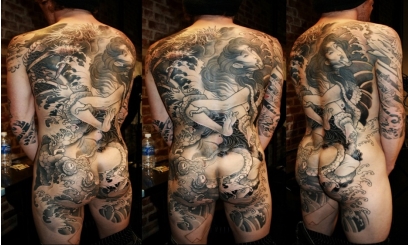
Fig. 1 Andre Malcolm The decoration was the earliest form of art.
This expressive form involves the application of colour. The use of ochre for colouring the skin which dates back to 164 000 BP from a South African coastal site Pinnacle point, where pigment pieces were found. Today's cosmetics and tattoos have a long history which is connected to this use of ochre. Hunters to this day use face paint as camouflage when stalking their prey. The use of manganese dioxide for body decoration found in European Mousterian Neanderthal sites, where blocks of this black pigment were found with over five hundred at one site. These blocks with scrapings on them together with grid stones and flint tools that carried out such functions. This indicates preparation of powdered pigment. Neanderthal tribes also used charcoal for body decoration or camouflage some sixty thousand years ago and the use of black pigment.
With the evolution of man in which the gene krthap became inactive and led to the reduction of body and facial hair. Body painting decoration etc. Was a reaction to this loss? Body painting is still used by people today who have not traded tradition for a modern way of life. If we go back in time and take a look at the statue of Venus of Willendorf with exaggerated oversized breasts, adenine with no facial features but on taking a closer look this statue was the ideal beauty of that time which represented good nourishment and fertility.
The Greeks obsession with the perfect body dates back to an earlier age for example the sculpture "Doryphoros (Canon). With its perfect proportions and ideas that the Greeks aspired to Doryphoros who is meant to represent an idealized version of the everyman the ideal male citizen, his body was a powerful tool that body of proportional balanced naked strong and exuding confidence which had an impactful embrace on the naked eye. Depictions of the human body in different cultures are not universal, and at particular times in history, that depiction of the human body has changed dramatically. Male nudity and nakedness was understood as a marker of civilization that separated the Greeks from their barbarian neighbours. This perfection of the perfect body that one should strive for but yet was unattainable is still with us today especially in the media such as television, internet, advertising, photography, and fashion.
This obsession for perfection and the manipulation of the body which is desired and yet impossible to attain is deep-seated in the human physic. The Egyptian representation of the human body which took the form of the pharaoh or king was of physical strength as well as youth. The pharaoh's body was soft and round with sloped shoulders a protruding belly, an ample breast and massive thighs.
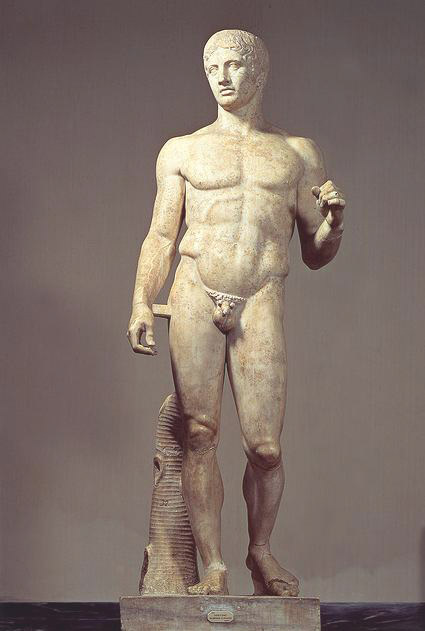
Fig. 2 Doryphoros (440) Marble, Museum Naples
Main Body
The body is an essential subject in the world of art, its treatment which varies across continents and within cultures throughout time. Figural approaches differ in space and form according to the needs beliefs and values of its people. Body perfection and the ideal style is rooted in culture, religion, economy advertisement, etc. Socrates said that the primary task of the artist was to give a standard idealized contour of the human body in exact proportions to gain balance and harmony an example of this is the statue of Venus de Milo one of the most famous works in art history. The ideal image of the man's body was the bronze sculptures of the "Warrior of Riace." These ideas of classical beauty have influenced art throughout the centuries until today.
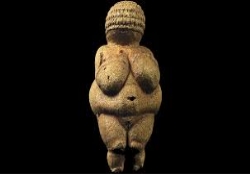
Beauty is in the eye of the beholder, or I like it, but this condition is deeply rooted in a nurtured society. Visual mediums in culture play a key role and reinforce these conditioned values. This changes with different communities, eras, and generations which is a reflection of cultural shifts and the embodiment of work by artists with each changing decade, etc. have been altered to the power of change.
One of the earliest finds was the statue of Venus of Willendorf this grotesque form of oversized breasts abdominal with no facial features, but on taking a closer look, this statue represented the ideal beauty of that time which was well nourished and fertile. This statue is rare and made of oolitic limestone. It was found in 1908 on the banks of the river Danube in Austria an example of the Palaeolithic Venus figurines. The Venus has no feet, the breasts, thighs belly and buttocks are large. The naval and public opening are distinct, and the face is nonexistence Venus of Willendorf 25.000 BC. Which is interesting, the primary focus of the figurine is the pubic opening is the focal point of this statue which may suggest fertility and reproduction.
Later in Western culture, the ancient Mediterranean fifth century BC Doryphoros of Polyleites exhibits proportion and physical dimensions of muscular and athletic perfection. The Greek created this sculpture Sculptor Polykleitos in the mid-fifth century BC. His attention to detail and perfect proportions of the human body were proved with this statue. This sculptor creates a sense of movement instead of a static pose. This idea of perfect male beauty an early blueprint for the future Michael Angelo's "David" is still with us today as can be seen in magazines and films.
The female form, for example, the "Aphrodite of Knidos" was a strong representation of female beauty which was an influence for artists of future generations. This image was clocked in mythological and biblical stories so that it wouldn't cause scandal Coming across as submissive and steeped in folklore unchallenged the gaze of the viewer. In the nineteenth-century artists, work began to explore modern and urban life. Seeing works in a different light. The reclining nude was not considered a goddess and the male beauty an ordinary man rather than a warrior or saint. Perceptions of beauty in the twentieth century changed and artists challenged in a different political way climate.
Minority groups were excluded from conventional definitions of beauty because of race, gender, age, shape, and health or disability. In the 1970s feminist artists challenged the notion of women as beautiful objects created by male artists. These artists often used their bodies to reclaim ownership of the gaze as seen in "Jenny Saville's "Plan" or Joan Jonas "Mirror Check." In the last half-century, artists have explored the narrow definitions of beauty on women in everyday life. The industries that fed these ideas of physical beauty exploit a false sense of physical attraction from the extremes of cosmetic surgery, underweight models on catwalks and an obsession with youth culture in a corrupt media of unhealthy toxic ideals of beauty.
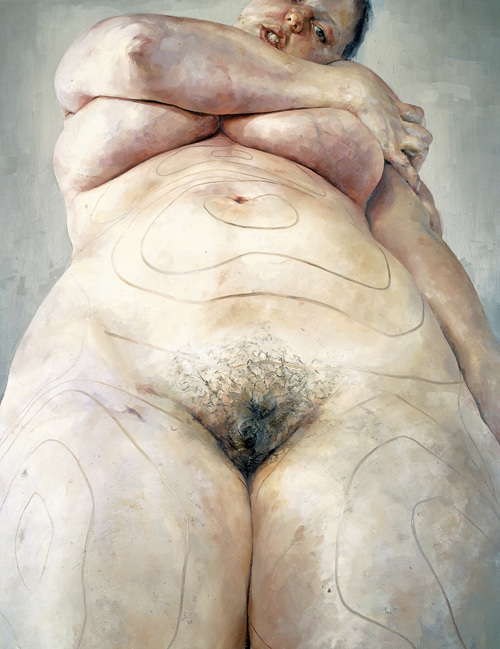
Fig. 4 Jenny Saville ‘Plan’ (1993)
From the early twentieth century onwards artists have sought to disrupt the assumptions we make about identity with individuals whose characters are not what they appear to be. Females who look as males, young adults who seem much older and hybrid creatures that are a mixture of animal and human, an early example of this is the body sculpture called "Lion Man of Hohlenstein Stadel, another example is Louise Bourgeois' sculpture an image of herself as a sexually ambiguous headless dog.
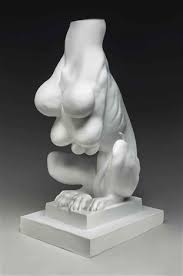
Fig. 5 Louise Bourgeois Title: Nature Study
This image is aggressive like instance with sharp defensive sharp claws to protect and guard the muscular physique suggests power and aggression it's also part male part female but taking a closer look the multiple breasts are nurturing and the smooth porcelain beautiful to touch. These images of artists own bodies or other bodies capture a moment in an identity that is continually shifting.
One of the ways of defining individual identity is through bodily adornment, by the clothes we wear, how we style our hair, makeup, tattoos, etc. Clothing from different periods is a canvas on which tells a person's social history. Identity has many associations, but one aspect of character that never changes is motherhood as can be seen in all art forms across the centuries in representations ranging from religious depictions of the Virgin Mary to Mary Cassatt's intimate portraits of mother and child.
Throughout history, artists have used the body to represent power in both physical and abstract ways. In its fundamental form power is physical strength. This power of resistance is often associated with violence and mayhem in a political guise. The biblical story of Samson and Delilah is an example of feminine seduction over male strength which is contained in Samson's hair which is normally symbolic of female beauty. The depiction of one person's power over the body of another is often shown for example in Bernini's representation of the mythological rape of Proserpina by Pluto.
Much power represented in art is sexual, and the body plays a key role in its depiction. Power in art is not only confined to the bedroom. At the height of the women's liberation movement Barbara Kruger's famous text "Your Body is a Battleground.
Another example of power is in Santiago Sierra media in which he pays a group of men to have their backs tattooed using their skin as his purchased canvas. A royal portrait of Louis XIV had the power of the king’s presence. Since the 1970s female artists fought to have power over their bodies which has been an important aspect of art. Yoko Ono and Marina Abramovic have used the power of their bodies to express the fate of one's own body. The power of the body has been a central theme for neons. Religion is the mother of art where the human body has been depicted in religious content. Its human instinct to represent the human body these supernatural beings were depicted as humans so that people could relate to this image of the soul. From images such as the Buddha or episodes in the life of Christ and sculptures of the Hindu Gods is not uncommon in religious art.
In the Middle Ages art based on the human form was installed in and on churches to protect the worshippers within from evil outside. Using a religious theme meant that artists could indulge in the depiction of naked subjects. In Christian iconography, Adam and Eve in the Garden of Eden was an obvious choice of subject for the Renaissance artist who wanted to explore the human form. Since the European enlightenment of the eighteenth century, the idea of religious subjects has declined, but the spiritual body still survives. Contemporary artists have used the body to express belief in the next World. In the series "Women of Allah look at the limitation of religion. The constructs of the human body in religious art help humanity make sense of the Spirit World. Sex and gender are the most explored subjects in art. What separates male and female is in the external genitalia. Social constructs influence the attitudes and outcomes of their social destiny. Through this social condition is how society sees the sexed human body.
The idea of the male and female becoming one is nothing new, if we look at examples of the immortal Greek Hermaphrodites whose male and female body blurred together. This depiction of female and male sexual ambiguity has continued to the present day with works of Robert Gober half male half female wax torso. Erotic imagery and sexual intercourse have been a recurring subject in art. One example is the gay scenes on the crafted ‘Warren Cup’ this scene of an older and a younger man partnering was an element of education in the Greek World. These scenes did not shock its viewers of that time. The reclining female nude was associated with ideas of seduction or submissiveness. In non-western cultures representation of sexual intercourse has been celebrated and its depiction of either pleasure or religious rejoicing infertility and life. Depictions of male and female genitalia had different meanings in societies. Images of the erect male penis can be found throughout ancient Roman town’s shops and homes as a symbol to ward off evil spirits.
In Roman society, wind chimes were believed to ward off evil spirits. The enormous penis with bells hanging from it is a symbol of good fortune. This protective symbol was visible everywhere in ancient Roman life as a good luck charm. This site of an erect penis was not shocking to the Romans. In modern and contemporary art genitalia as a subject matter has become a tool for confronting issues of feminism as seen in Valie Exports ‘Genital Panic and Lynda Benglis’s self-portrait with a dildo. The human body has been used to express man's deepest human feelings from shock to joy. The body as a canvas with images of the material body tell different stories of emotions that humanity relates. Whether it's the loss of a loved one to depictions of the cruzificition and the sorrowful Virgin Mary the viewer can feel the pain and anguish. The representation of real guilt is also a recurring Christian theme with biblical stories of Adam and Eve their nakedness and temptation in the Garden.
The drawing of religious language is nothing new, that feeling of shame and oppression. In Edvard Munch painting which captures the shame often felt during puberty with confusing emotions. Ernst Barlach's carving of a veil beggar with only her hand's visible speaks of the shame of poverty. Anger, fear, and mental confusion are emotions that are expressed in paintings such as in Henry Fuseli's ‘The Nightmare' with its sense of fear and Alfed Kubin's ‘Every Night we are haunted by a Dream' in which a female body is pulled and twisted into a series of erotic shapes. A good example of a terrifying image is that of the ‘Laocoon tells of the terror of the Trojan priest and his sons caught in the murderous coils of the serpents of Apollo which is frightening to the viewer.
All human emotions have been explored by artists in different periods throughout history from pleasure to pain. Emotions of love as depicted in Chagall's ‘The Birthday and Canova's ‘Psyche Revived by Cupid's kiss. With the wrapping of limbs dancing and the turning bodies and use of bright colours and shapes in which are represented in Andre Derain titled ‘This Dance ‘1906. Depictions of emotion concerned with the human form are ingrained in the history of art and will remain with us for some time to come whether it be filmed, photographs paintings, etc.
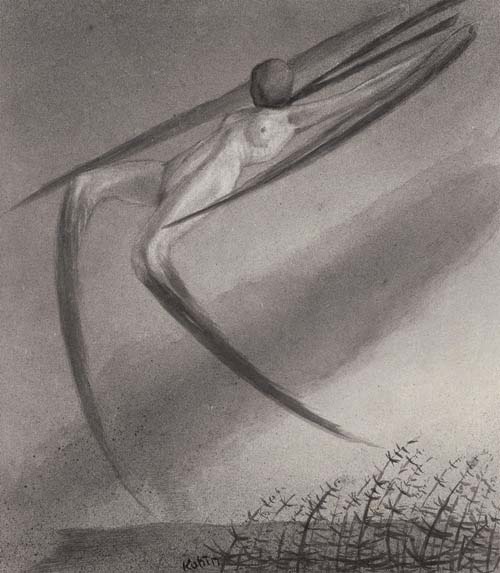
Fig. 6 Every Night We Are Haunted by a Dream (1902-03)Alfred Kubins pen and ink, brush wash and spray on paper.
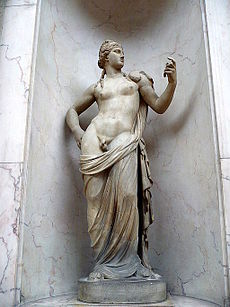
Fig. 7 Greek goddess: Hermaphroditus
The bodies largest organ is the skin which is a protective layer and has been used for body decoration and medical interventions and in the Renaissance and the eighteenth-century dissections of corpses enabled studies to be made of the internal body which led to new understanding of how the human body works. Illness and death and the end of physical life have been the subjects of art throughout history.
From infant to old age as depicted in Gastav Klimt's ‘Three Ages of Woman 1905. The aging body is marginalized in a visual culture whereas the youthful body is perceived as the perfect human form as evident in today's youth-oriented culture. John Coplans whose own sagging body was photographed in a serious of self-portraits. Illness accidents acts of violence and physical disorder have held a fascination for artists. Bodies suffering pain and impending death have been portrayed in such works as Ron Mueck's ‘Dead Dad.'
In the late twentieth century, the artist began using their bodies as medium testing the body’s limits in physical and psychological ways. Sigalit Landaus video of hula hooping with barbed wire titled "Barred Hula 2000 tests the boundaries of bodily pain. Kira o Reilly's slow-motion tumble down a stairwell title "Stair Falling" 2009. These artists have endured pain discomfort to explore the limits of the body.
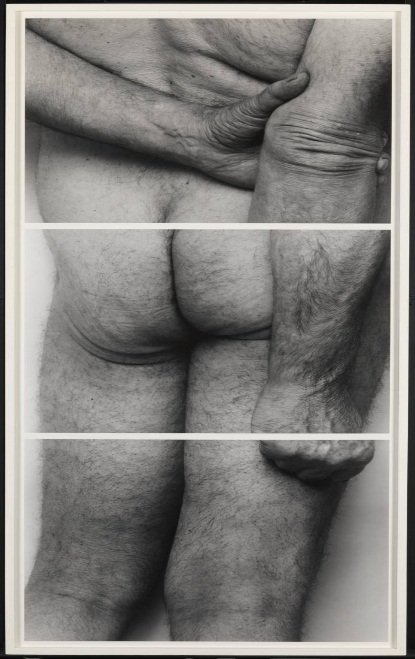
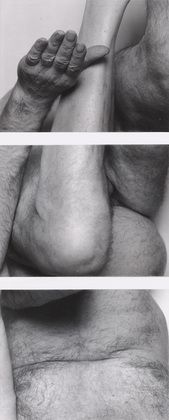
Fig.8 John Coplans Self portrait Fragmented Bodies (1984)
The space between the body and its surroundings as seen in Andreas Gursky’s photograph of thousands of identically dressed North Korean cheerleaders. The claustrophobia feeling that is inflicted by such works as Cecily Brown’s canvas of body parts Titled ‘Pure Moment’ and Spencer Tunick’s photograph of naked volunteers packed together in a tangle of limbs across the floor of a London department store.
For sculptor space around an artwork is more complex than for paintings or performance. To represent the body’s movement through space sculptors have incorporated poses that give a sense of motion to material such as marble or bronze. Myron’s ‘Discobolos captures a moment of stillness and tension just before the athlete releases his discus present the idea of movement from a particular point. Umberto Boccion’s lunging figure titled ‘Unique Forms of Continuity in Space 1913 is a visual construct of the effects of forwarding motion and opposing wind on the body. Edweard Muybridge's titled work ‘A Man Sprinting’ 1887 with the then new medium photography enabled movement to be documented and deepened a new understanding of the body in motion.
Robert Longo explored the involuntary movements of the body in his ‘Men in the Cities’ series by throwing objects at participants and capturing their reactions in contorted poses and spontaneous gestures. A scale is another device by which artists have examined and subverted the body's position within the surrounding space. Charles Ray shows with a slight shift of scale can produce dramatic effects. His sculpture title ‘Family Romance’ 1993 of two adults and two children is life like except for the fact that all four are the same height.
The notions of beauty identity and power are continuously explored in art. But the body is more than beauty it contains a system of organs and mechanical functions for the body as a whole to survive. Artists have investigated issues that are considered taboo in society that challenge existing norms. Abjection, today in art, is associated with human emissions such as in Andres Serrano's image of ejaculation caused an uproar in the Catholic Church which prohibited against the spilling of seed. Contemporary artists have also focused on the mutilation of the body to refer to ideas of abjection as in John Isaacs's Body Dysmorphic sculpture title ‘I CAN'T HELP WAY I FEEL (2003).
This life-size sculpture with it's the body of extreme obesity. In a world where obesity has reached epidemic levels this work serves as a warning, but on a closer look, this sculpture may convey an emotional aspect in which an individual feels about their body. Body dysmorphia is a disorder that threatens health. Donatello's Mary Magdalene ‘c 1457 is an abjectification for deeply religious reasons. Private abjection is a result of social exclusion as in the theme based Christian Shad's portrait titled ‘ACOSTA the Pigeon-Chested Man and Rashad the Black Dove 1929 of two circus performers the man is physically disfigured and she is a social outcast because of the colour of her skin. The abject body has also been employed by artists to symbolize the body politic in politics. Rudolf Schlicher uses images of human mutant's mannequins and robots to condemn the depersonalized mechanization of modern society.
Boris Taslitzky's disturbing picture of the clearing of corpses at Buchenwald concentration camp reflects the abjectness of the victims of the Nazi atrocities. The absent body is just not about pretty graphic images. From the caves in prehistoric times with walls filled with images of animals or depictions of dancing figures on other walls handprints. These silhouettes in the ‘Cave of Hands' in southern Argentina suggest the presence Of people long dead with their imprints left behind. Yves Klein created abstract tracings of the human form by smearing a naked woman with paint and having her dragged across a canvas.
Self-portraits may range from a realistic representation of the artists face to images that document a personal history or abstract the elements of a body. Beds places of conception, birth, sleep, sex, and death have been used by many artists to represent the absent body. Sarah Lucas homes in on the sexual aspects of the bed. Antony Gormley’s bodily impression in beds of bread was a reference both in life and death. The absence of the dead is a theme by artists usually in the form of tomb monuments memorializing an individual. The same theme can be seen in Andy Warhol's ‘Electric Chair' series the chair itself seemingly haunted by the ghosts of its former occupants.
The body gone maybe represented by actual bodily remains or artwork may show no more than the body's passing as in Richard Long's work titled ‘A Line Made by Walking.' Either present or absent the body remains in the eye and mind of the viewer. In the twentieth century with advances in technology and shifts in attitudes to the changing human body. Medical treatments became available such as surgery, drug therapy, and genetic engineering. Based on a science-based knowledge about the body. This was termed a technological fix either by direction from a doctor or a personal choice of a patient this led to a revolution in the way the human body was seen in the twentieth century.
This changed perception of how the body was viewed especially in Western societies. This shift of new ideas from scientific and medical discoveries the concept of the human body changed. Traditionally surgical intervention was associated with pain and infection and dealt with broken bones and minor manipulations of the body's surface. In the early nineteenth century it was believed that diseases originated from disruption in the balance of the body's fluids. That may be related to a person's way of life or impact from the environment. Diseases could be treated by changing one's way of living, changing to a different environment, restoring the body's balance through bloodletting and other procedures. The opening up of the body's anatomy and the act of cutting into the flesh to remove a tumor as in today's world would have been frowned at. But as the nineteenth century wore on things started to change, and this new found knowledge has made today's modern surgery possible.
With a new concept of how the body worked with it's composite of organs and tissues that have particular functions. In a newfound belief that surgery could rectify disorders by removing the diseased parts of the body to function again and regain health. By the early twentieth century, it was possible to expose all the internal organs of the body without immediate danger of infection with intended surgical procedures on these exposed organs. With improvements in surgical skill the public gradually became used to the idea of surgery. With surgical progress in the United States, the American patient wanted to be cured quickly. A choice between surgery and prolonged medical treatment patients had picked up on the technological aspect. The twentieth century was to become the century of surgery. Cosmetic surgery shows how pursuing the technological fix lead to a different view of the body as something separate from the person. This technological fix can change the structure of the physical problem, for example, sex reassignment. Cosmetic surgery has developed into one of the fast growing medical procedures in the world. This technological fix for a nontechnological problem has grown in popularity especially in the second half of the twentieth century.
Surgical procedures on the face and body were now common. In 2004 alone, 9.2 million cosmetic plastic surgery procedures were performed in the United States. Cosmetic surgery originated from plastic surgery which was assigned to war injuries, breast reconstruction after therapeutic mastectomy. This was termed plastic or reconstructive surgery whereas cosmetic or aesthetic surgery is seen as a choice by the person that chooses a certain procedure for an area of their body. It's interesting that this boundary between plastic and cosmetic surgery became increasingly blurred. Correcting deformities eliminates social stigmatization and social exclusion. Facial wounds war injuries, especially after World War 1, were seen as a social and surgical problem. The goal of facial surgery was to create a face free from deformity and that the wearer would function in society.
Cosmetic surgeons recognized early in the twentieth century that by transforming the problem of being unhappy with one's appearance into a medical diagnosis changed how this procedure was seen in a new light that if a person was happy with their appearance would lead to better mental health and in return the would function better in society. This new found thinking was the gateway to what we now have in our everyday image conscious society that merges art and body in associated media's as rock star Madonna once said quote ‘image is everything.' Cosmetic surgery was seen as a quick fix or a remedy. This new found liberation of the technological fix in cosmetic surgery was rooted in a cultural context. Social structure and identity in a culture where the image is the order of the day cosmetic surgery thrives on the external perceived norms of physical beauty. The consumer commodity was seen as important and how one's external appearance had to be important for one's identity or social standing.
In premodern western societies, visual appearance was not seen as important instead one's ancestry or religion came first. With cultural changes throughout the twentieth century, cosmetic surgery evolved. This ideal notion of beauty shifted the public's assumptions about the acceptance of cosmetic surgical technique. This quick fix surgery was now desirable. Unfortunately, racist biases have reared its ugly head with its manifestation in cosmetic surgery from its beginnings, seen as deformities were Jewish, Black or Irish noses or Asian eyelids were seen as abnormalities in need of correction.
On these grounds, racially based standards of beauty were reinforced. The expectations of external physical normality for everyone in the western world has changed with the spread of cosmetic surgery and has contributed to the beauty cult phenomenon of the twentieth century. This transformation in external appearance in how people look and think with this quick fix technological surgical procedure. With the devastation of World War 1 artists responded to the impact of war. In the period that followed saw social, political and economic reconstruction in Europe. This had an impact on the human body in the new cultural chapter.
The body had been a target and its attack on this human canvas the flesh of man. This sacrifice for modernity which was portrayed in the mass media photography that conveyed images of war as concerns with the impact on the human body. The sensitive nature of these tragic ironies provoked artists to respond in a range of ways. The surrealists and Dadaists redefined beauty in a new way that was beyond recognition. Artists embraced and reacted against the conventions of classical beauty. The body was now a site of physical repair rebirth and reconstruction. With advancing technologies, human made machines, prosthetic technologies, and reconstructive surgery led to how the body was represented in the twentieth century. Modern European artists struggled to redefine the body in this period after World War 1. The human body played an important part in many artistic developments in this period.
Cubism relied on form and in a way naked. Against the horrors of war, bodies were once again beautified through structured forms. Images of motherhood were idealized in the post-war period in western countries. Picasso's ‘Maternity paintings (1920 1921) and Mother and Child (1921). Albert Gleize's cubist abstraction Mother and Child (1920) are examples of the female body like a goddess of the past and mother of the future. These works symbolized a western social and cultural rebirth. These artistic images of rebirth were also produced in Britain, the United States and Australia. Artists in this period visualized reproductive sexuality which affirmed life after death and peace after the war. Soldiers playing cards were depicted with a fragmented machine aesthetic, reconfigured as robot’s limbs appear as steel.
Leger hybrid of humanity combined with machine ideology by applying superhuman qualities to the human body in art. Now man and machine were in harmony. At this time the prosthetics industry attempted to pitch technology as to empower the disabled man. Belief in human unity led artists to identify with people of different classes and nations and to universalize human experience. Artists saw the opportunity for arts healing powers within this chaos of contemporary life. The desire for unity and this new relationship between art and society and the connection of man with nature.
Materials that were used in this time of modern classicism were Plexiglas and steel reinforcing the impression of the heroic armature. Various social constructs and cultural environments also impacted on ideas of embodiment and representations of the human body. By the 1930s and 1940s, there was a change in the atmosphere, abstraction, cubism, expressionism, Die Brucke, surrealism and Dadaism, Bauhaus and Weimar art were all banned and labeled ‘degenerate art.' Artists were forced to flee, change their style, or cease the practice. Some artists became anti-Fascist activists. This had become a matter of life or death. To the Nazi way of seeing ‘Degenerate art' of this abstraction was crude. Nazi art wanted a classical clinical body with hard muscles but stripped of character and sexuality. German youth male and female were depicted in this pure classical style of muscularity such as Fritz Klimsch's title ‘The Beholder’ (1932) and Georg Kolbe’s ‘The Chosen One’ (1942).
Nazi art had no sensuality. These sterile depictions of Nazi youth in heroic images, graphic design and advertising of that time gave out a chill warning. This shift towards hyper-muscular body’s images depicted of men as war machines. This toxic image became a public art that could be seen in posters and exploited in Hollywood films.
In the United States muscles, masculine brawn and technology were merging into one. This concept of production defined all thing's masculine. Men's bodies were seen as valuable units of the industry but without any real social or labour power. This defined symbolic male body was a product of a capitalist U.S. government and men were seen as valuable units of the industry.
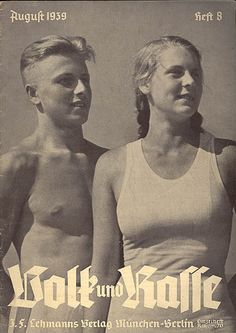
Fig. 9 Nazi Youth poster
In the 1950s there was a shift in technology television was another rehabilitation of the body was to endure, in this modern electronic world that beamed real and ideal bodies into everyday households especially in the United States. The 1950s saw massive social and economic changes as new technologies developed. New mass media meant that images became the new visual feast for the naked eye. Pop art's female figures were glamorized and sexualized. Women were also seen in the domestic stereotype roles in the 1950s America, but within a decade the women's liberation movement began to challenge these representations of the female body in this mainstream media.
Artists became activists employing political change as the aim of their practice. Feminist artists used their bodies to create works that provoked thought. Feminist performance artists exposed the male gaze. Performance art attacked the power structures of this oppressive voyeurism in the 1960s and 1970s. Performance art was the major arena where the body was enacted as text subject and object, the body was seen as a gesture, space, and sound. Physical endurance and self-mutilation were ways of confronting the issue between body and society with the use of text and flesh, subject and object.
In Valie Export's “Genital Panic” (1969) she slouched in a chair brandishing a machine gun and exposing her pubis to the camera. The viewer with the reverse gaze, this work confronts to induce panic in the voyeur. Feminist artists challenged masculinist modes of representation, reclaiming the female body for women and seeing the body through women's eyes. The redefinition of the sculptural object in the 1980s saw a new way of considering the body. Material culture was now available in backyards and city streets redefined the body in such works as Tony Crag’s “Red Skin” (1982) which contained plastic detritus.
The 1980s saw postmodern artists and photographers broke new ground of critique and taboo, Robert Mapplethorpe (homoerotic) erotic danger (Nan Goldin) sexual intimacy (Tina Barney). The gay rights movement and Aids crisis turned many artists into activists. Gay male bodies became the subject of public scrutiny and public property. Gay men's bodies were a sacrifice at the altar of public health and opinion. Religious groups that repelled homosexuality fuelled artists to react and express on an intellectual level. Ron used his infected blood in performances. Mainstream media such as television of that time rejected the gay male body. This discrimination because of medical scrutiny and disease became a spectacle of horror. Artists such as Felix Gonzales Torres, John Lindell, and Donald Moffat used personal narratives as gay men living through the Aids crisis in a society that loathed them.
In 1987 an exhibition titled “Morality Tales” History Painting in the 1980s heralded a new beginning as did the National Day with Art which was a national festival of action and mourning. Exhibitions became educational campaigns of the HIV and resisting
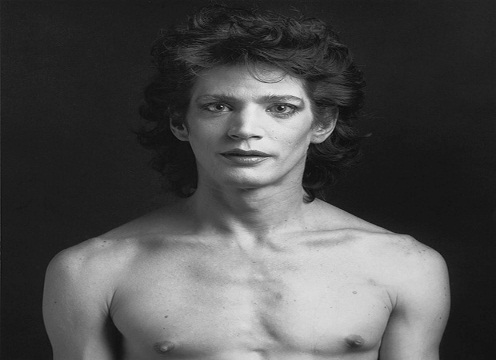
Fig. 10 Robert Mapplethorpe: Self-Portrait (1980) silver print
Homophobic media representations were demanding government funding for medical research and social services and fighting prejudice. The art collective is known as Gran Fury initially formed from ACT UP the New York-based AIDS Coalition to unleash the power, created a series of photographs of kissing couples intended for a public art project on the sides of buses. Political messages such as “Kissing Doesn’t kill, Greed and Indifference Do” (1990). This work merged on billboard advertising, and it also led to an exhibit at the Venice Biennale. In this era bodies were the battleground where medical and moral wars were fought.
By the 1990s the body had become a different centrepiece of contemporary art practice bodies exploded onto the internet and new digital media formats which became a social issue. Electronic and digital media, video and interactive formats transformed the practices of the bodies flesh was seen as obsolete. This era of medical advancements in the mapping of human genes in fertilization, cloning, and other genetic technologies. Influenced by this body technology artist Stelarc who is an Australian performance artist conceived the idea of growing an ear on his arm in 1996 but it wasn't until 2006 that the procedure was carried out Fig. ‘Third Ear’ (2006) Stelarc.

Fig. 11‘Third Ear’ (2006) Stelarc.
Future bodies with advancing technology from the prosthetic limbs of the previous two World Wars the combination of man and machine. In Jake and Dino's Chapman's Tragic Anatomies (1996) created a horror plastic world of child's play and incest in the ‘Garden of Eden.' This created a sensation in the mainstream press which influenced other artists around the world to use the power of the body as a social and political action. At these time Chinese contemporary artists were censored. These artists used photographs and video media as a form of resistance against conservative traditions. Depictions of the nude body were not allowed and raids on studio's and works confiscated. Now artists used their bodies in this repressed political climate. Self-expression becamethe medium in this changing political, social landscape.
Performance artists used their bodies as vehicles to explore issues such as masochism, pain endurance, humiliation, torture and gender role inversion were explored by artists such as Cang Xin, Maliuming, and Zhang Huan. These performances were photographed. Photography has showcased the body in explicit form and treating it as an illusion, where boundaries are tested. With the evolution of digital media and the internet, artists have found a new way to find their voice by accessing a wider audience in a global context in this digitized cultural zone. With technology advancing in visual culture bodies have been explored in new and different ways. The power of body art in a social, political movement or era where it is warfare and human rights abuses has placed the body in a place of suffering and critical response.
In a time when disabled, indigenous, immigrant, gay and refugee bodies enter the cultural sphere demanding recognition and presence. This unsettlement can be seen in Marc Quinn’s public sculpture in Trafalgar Square ‘Alison Lapper Pregnant’ (2005)which showed disability as beautiful and heroic. This powerful sculpture signalled a new public presence of disability in society.

Fig. 12 Alison Lapper Pregnant (2005) Marc Quinn
The human body remains the major zone where artists convey works and views on issues of war, immigration, disability, homosexuality and liberal views. This conflict of identity and a sense of belonging seeks social questions and intervention. With shifts in social structures and demands for political change at local and global levels. Meanings of the body continue to mark and ingrain in history and reality
Conclusion
As seen in this thesis the human body has been reinvented time and again through the centuries, a representation of people of each era and body ideal that bleeds into one another. The power of sensation and use of the body whether it be art, religion, performance art, sculpture, painting, digital media and diversity of ideals, the body as a medium is as powerful now as when the first cave paintings were discovered.
This creative process of large design that echoes all the tribes on earth maps man's journey deepened by curiosity through representation of evolutionary outcomes both real and imagined. With each culture shift the human body has different ingrained representations and meaning, the naked male body in ancient Greece was seen as strength when athletics competed in the then Olympics. The power of the Gods in a human form of beautiful Greek and Roman sculptures. Artists have since the dawn of creative process as seen with cave painting, have explored the possibilities of using the human form as a vehicle or vessel.
People and politics are intertwined, and the use of image hasn't shied away into oblivion. Issues of fertility, sex, religion, policy, and the use of control over its people at a variety of levels either negative or positive which are explosive given the powerful impact on the human condition. This sense of control is a collective action as evident in history, fragmented or multiple depending on social constructs and political structures impacting the individual's choice of terms of politics and freedom and the choice one has in life. With ever increasing changes in technologies such as genetic engineering. Cosmetic surgery and varying media and man's new perception of the human body and changing attitudes to beauty and the body ideal with the hybrid of cyborg and man as seen in Sterlac's works with an ear growing on his arm.
The future presents a challenging journey into the unknown territory especially with the misuse of technology. Manipulation of the human body as a whole exploited begs the question is the organization running on parallel line. What was once science fiction is becoming hard facts? Malicious cover-ups of the past that remained a secret for decades concerning abuse if innocent people whether it was children, victims of war in concentration camps as seen in Hitler's Germany or powerful enhancing super drugs. These future enhancements have to be taken into question. The paradox between man and machine has been fantasized about for decades especially since the 1950s.
End Notes
GARRISON, D., 2010. Introduction, p. 3-13
HOLMES, B., 2010. Medical Knowledge and Technology, p. 87-99
CONNOR. D., 2010. Popular Beliefs, p. 109-126
ZEITLIN, F., 2010. Reflections on Erotic Desire in Archaic and Classical Greece, p. 135-141
HOLMES, B., 2010. Marked Bodies, p. 161-165
SCHLICH, T., 2010, 2014. The Technological Fix and the Modern Body, p. 71-79
COYNE, A., C., 2010, 2014. Dissolution, Reconstruction, and Reaction in Visual Art, 1920 to the Present, p. 201-214
AVRAMIDOU, A., 2010, 2014. The Body of a Hero, Images of Herakles and Their Political Use in Antiquity, p. 217-235
FISCHER, M., 2014. Body Marks (Bestial/Divine/Natural) An Essay into the Social and Biotechnological Imaginaries, 1920-2005 and Bodies to come, p. 166-199
Bibliography
Books
Title: “Body of Art” by Phaidon
Title: “Marina Abramovic Public Body”
Title: “A CULTURAL HISTORY OF THE HUMAN BODY IN ANTIQUITY “edited by Daniel H. Garrison, English edition, first published in 2010 by Berg.
Title: “A CULTURAL HISTORY OF THE HUMAN BODY IN THE MODERN AGE” ck edited by Ivan Crozier, Hardback edition first published in 2010 by Bloomsbury Academic BBC Documentary Series
Title: “More Human Than Human” youtube.ie
Internet
www.art-in-context-the-human-body-throughout-history-youtube.ie
www.how-art-made-the-world.ie
www.the-history-of-art-in-three-minutes-youtube.ie
www.art-through-time-a-global-view.ie
www.bodies-of evidence-feminist-performance-art.ie
www.flesh-as-communication-body-of-art-theory.ie
www.marina-abramovic-an-art-made-of-trust-vulnerability-and-connection.ie
www.performance-art-movement-artists-and-major-works.ie
www.performance-artist-marina-abramovic-I-was-ready-to-die.ie
www.image-manipulation-in-films-and-magizines.ie
www.the-evolution-of-human-artistic-creativity.ie
www.human-through-art.ie
www.human-form-in-art-throughout-the-ages.ie
Cite This Work
To export a reference to this article please select a referencing stye below:
Related Services
View allRelated Content
All TagsContent relating to: "Arts"
Art can be described as the expression of creativity, using emotion, imagination, and skill to produce a work of art. Art is a matter of opinion and preference, and can be understood or appreciated in different ways by different people.
Related Articles
DMCA / Removal Request
If you are the original writer of this dissertation and no longer wish to have your work published on the UKDiss.com website then please:




